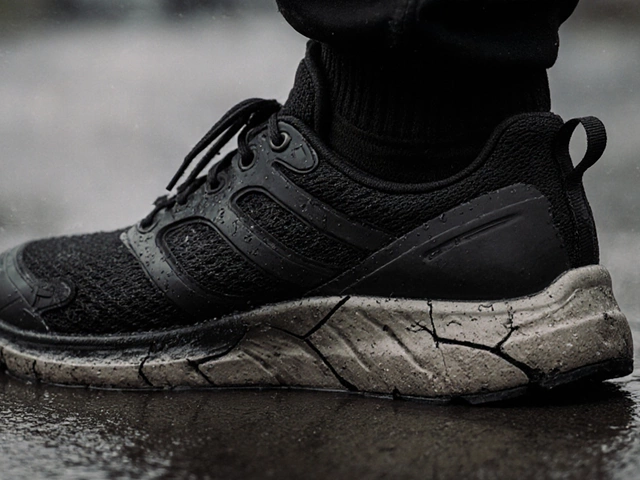Can You Run a 10k If You Can Run 3 Miles? What Runners Need to Know

You’ve knocked out a solid 3-mile run and now you’re eyeing the next big number: 10k. That’s 6.2 miles—more than double what you’re used to. Feels intimidating, right? The good news: If you can run 3 miles without stopping, you have a solid base. Jumping to a 10k isn’t impossible, but it’s not automatic either. You’ll need a plan, some patience, and maybe a sprinkle of stubbornness.
A lot of new runners hold back, thinking there’s some mysterious wall between 3 miles and 6.2. That wall is mostly in your head. The gap is real, but it’s bridgeable with the right habits. Some people push straight to the 10k and make it through, but most feel better when they boost their mileage gradually.
Here’s what you actually need to think about: Can your legs and lungs handle a run that’s twice as long? Are your fueling habits up to scratch for runs over an hour? Do you know how to pace yourself so you don’t burn out mile five? These are all fixable, practical things. Stick around—getting from 3 miles to a 10k is a classic move, and you can absolutely do it with a smart approach.
- What Does 10k Mean for Runners?
- Comparing 3 Miles to a 10k: The Real Difference
- How Far Off Are You, Really? Stamina and Mental Tricks
- Training Adjustments: Turning 3 Miles Into 6.2
- Common Mistakes New 10k Runners Make
- Tips to Make Your First 10k a Win
What Does 10k Mean for Runners?
When runners talk about a 10k, they mean a race that’s exactly 10 kilometers long—or 6.2 miles if you’re not a fan of the metric system. The 10k is a sweet spot in running: it’s a real distance challenge, but doesn’t require the full-on sacrifice of marathon training. For a lot of people, it’s the first race where pacing, fueling, and endurance all start to matter a lot more than in a quick 5k or casual jog around the block.
A 10k isn’t just about doubling your 3-mile effort. It usually pushes runners into new territory, where your aerobic and mental game both get tested. Race organizers love the 10k because it attracts both people moving up from shorter races and those who want a manageable long-distance event. You’ll see everything from beginners to serious competitors lining up at the start.
Here’s why the 10k training matters to runners:
- You can finish a 10k in under an hour if you’re moving quick. Some casual runners take 75 minutes or more, and that’s fine. Finish times depend on fitness, weather, and pacing.
- Most runners burn between 600–800 calories during a 10k, so you can’t just wing your nutrition. Bring water and maybe some carbs if you’ll be out longer.
- If you can run 3 miles, you’re already halfway to 10k. That’s a huge mental boost.
| 10k Fact | Details |
|---|---|
| Distance | 10 kilometers (6.2 miles) |
| Popular Finish Times | 45–75 minutes |
| Calories Burned | 600–800 (average adult) |
| Global Popularity | Second only to 5k races |
The 10k builds on everything you’ve learned with shorter runs but feels like a real milestone. It’s a favorite on the race calendar because it helps runners see real progress without the huge time commitment of marathon training. If you’re looking to level up, this is where you start thinking seriously about your pace, nutrition, and the little habits that make running longer distances possible.
Comparing 3 Miles to a 10k: The Real Difference
So, what’s the real stretch between running 3 miles and knocking out a full 10k? It’s not just about doubling the distance. The jump brings new challenges for both your body and your mind.
First, let’s get the numbers straight. Three miles is about 4.83 kilometers. A 10k clocks in at 6.2 miles—or just over double what you’re used to. That means if you’re comfortable finishing 3 miles, you’re around halfway. The next half will test your endurance in ways that might surprise you.
Here's a side-by-side look:
| Distance | Miles | Kilometers | Typical Completion Time (Beginners) |
|---|---|---|---|
| 3 miles | 3 | 4.83 | 30-40 min |
| 10k | 6.2 | 10 | 60-80 min |
The most obvious difference is time on your feet. At an easy pace, running a 10k will take most new runners an hour or more. That means you’re asking your muscles, joints, and even your mind to keep working well past what you did at 3 miles.
This jump can also crank up the risk of issues like muscle cramps, tired legs, or running low on energy (hitting the dreaded "wall"). You’ll likely need to focus a little more on things like pre-run nutrition and hydration too—stuff that isn’t as crucial on those shorter runs.
What surprises a lot of people is how much mental grit matters. Long runs mess with your head. Mile four and five can feel way longer than you thought. Pacing becomes tricky. Run too fast early on, and the last couple miles bite back.
Bottom line? The 3 miles to 10k jump isn’t just a matter of distance—it’s a test of prep, stamina, and a bit of mental game. But knowing where the tricky parts are makes it way easier to tackle them.
How Far Off Are You, Really? Stamina and Mental Tricks
If you’re clocking steady 3-mile runs, the jump to a 10k isn’t as wild as it sounds. You might think you need athletic superpowers, but in reality, it’s about basic stamina and a bit of mental hustle. Your body is already handling a good chunk of distance. Most beginner-friendly 10k training plans work from the idea that if you can run 3 miles, you can build up to 6.2 within 6-8 weeks by adding a little distance each week.
The physical gap? It’s really just time on your feet. The pace you use for 3 miles might need to ease up a bit for longer runs. As for your heart and lungs, studies have shown most recreational runners only need about 20% more weekly mileage to get comfortable with a new distance. Your legs and joints will adapt—just let them catch up gradually.
Now, for the real sneaky part: your brain. Running longer comes down to your mental game just as much as your muscle stamina. Studies from real running groups, like a report out of the University of Copenhagen, show that runners who break their runs up into manageable "chunks"—think two 3-mile efforts instead of one scary 6-mile haul—finish stronger and with less stress.
| Current Run | Longest Run Needed for 10k | Weekly Mileage Boost |
|---|---|---|
| 3 miles | 5-6 miles (before race day) | Add 0.5-1 mile per long run each week |
A few tricks really help when moving from 3 miles to 10k:
- Slow it down. Give yourself permission to go at an easier pace, especially on long days.
- Use the run-walk method. Plenty of runners do run/walk intervals to keep energy up. Doesn’t make you any less of a runner.
- Break it up mentally. Focus on reaching the next mile marker, not the finish line. Ticking off mini-goals feels a lot more doable.
The gap is real but smaller than you think. If you play it smart with your training—and keep your head in the game—you’re way closer to a 10k finish line than you might believe.

Training Adjustments: Turning 3 Miles Into 6.2
If you want to go from running 3 miles to finishing a 10k, you’ll need to tweak your routine a bit. The first step? Bump up your long run, but do it slowly. Most coaches recommend adding about 10% to your longest run each week. So if you’re running 3 miles, next week shoot for 3.3, then 3.6, and so on. This keeps injuries at bay and helps your legs get used to the extra distance.
Don’t just add miles to one run, though. If you’re only running once or twice a week, try to throw in a third easy run. The more your body gets used to running, the better you’ll handle longer distances. Keep your pace chill—if you try to run a 10k at your 3-mile speed, you’ll probably run out of steam.
Mixing in "back-to-back" runs helps too. For example, do a short run the day after your weekly long run. It teaches your body to keep going even if your legs are tired. If your schedule’s tight, split your total weekly miles over more days rather than cramming them into one or two big efforts.
- Add one longer run each week, making it 0.3 to 0.5 miles longer than last time
- Keep your other runs easy; focus on time on your feet, not speed
- Stay consistent (running three times a week works for most people)
- Walk breaks aren’t cheating—they actually help many runners stretch out to 10k
- Rest is part of training—your muscles need time to recover and get stronger
Nutrition starts to matter more as your runs get longer. Eating a little carb-rich snack an hour before your 10k training and drinking water during summer runs can make a big difference. You don’t need fancy gels for a 10k, but a banana or slice of toast goes a long way.
Here’s a quick way to picture your weekly increase:
| Week | Longest Run Goal (miles) |
|---|---|
| 1 | 3.0 |
| 2 | 3.3 |
| 3 | 3.6 |
| 4 | 4.0 |
| 5 | 4.5 |
| 6 | 5.0 |
| 7 | 5.5 |
| 8 | 6.2 (Race Day!) |
Don’t forget cross-training. Mixing in cycling, swimming, or even brisk walks gives your joints a break but still builds your fitness. And if you start to feel aches, swap a run for a low-impact workout to stay on track for the 10k without risking injury.
Common Mistakes New 10k Runners Make
Diving into your first 10k training is exciting but pretty much every runner stumbles into the same traps. These errors slow progress, lead to frustration, or even sideline you with injuries. Spot them early and you’ll save yourself a world of hassle.
One big mistake: going out way too fast. It’s so easy to burn through all your energy in the first couple miles because you feel great. But here’s the thing—10k is twice the distance you’re used to, so pacing becomes make-or-break. A lot of new runners finish their early races feeling wiped or even have to walk it in because they expected 3-mile speed to last 6.2 miles. It won’t.
Another common error: ignoring recovery. You’re adding miles, so your legs and knees need a little extra TLC. Not stretching, not sleeping enough, and skipping rest days add up fast. There’s this stat from the American Academy of Orthopaedic Surgeons: up to 70% of recreational runners get injured each year, often because they ramp up too quickly or train through pain.
Then there’s the temptation to skip the long run in training. It feels tempting to just do a bunch of 3-4 mile runs, but your body needs time on your feet. The long run is like a dress rehearsal for race day. If you’ve never pushed past 3 miles in practice, race day will be a real slog.
- Not fueling up: Once you’re running for over an hour, water and carbs become your friends. Heading out with zero snacks, or not hydrating, can turn a 10k into a slow, grindy struggle.
- Wearing the wrong gear: Blisters and chafing are way more likely at 6.2 miles. Don’t try new shoes or untested shorts on race day.
- Neglecting mental prep: Halfway through a 10k, the voice in your head will want to quit. Practicing mental tricks—like focusing on the next mile, not the finish—makes a difference.
Another thing to watch: not adjusting your training plan if you’re tired or sick. Pushing through every run “no matter what” often leads straight to injury, not victory.
| Mistake | Result |
|---|---|
| Starting too fast | Running out of energy, burning out mid-race |
| Skipping long runs | Difficulty with full race distance |
| No recovery | Higher injury risk |
| No mid-run fuel | Fatigue, slower finish time |
| Poor gear choices | Blisters, discomfort |
Catching these mistakes now makes your running distance journey smoother and a whole lot more fun. Every runner messes up here and there — the smart ones learn and adjust fast.
Tips to Make Your First 10k a Win
So you've put in the work and you're lining up for your first 10k. Here’s what can really help you handle it like a pro, even if you’re just coming from regular 3-mile runs.
- Start Slow (No, Slower Than That): Pacing ruins more first-time 10k training attempts than anything else. Most runners start too fast because they feel fresh. Hold back, especially in the first half. A good rule: your first mile should feel easy—almost boring.
- Train With Purpose: Mix up your runs. Don’t just log more distance. Try one longer run a week (add half a mile each week), one tempo run (run a little faster than your normal pace for a mile or two), and some easy recovery runs.
- Hydration and Fuel: Once you get close to or over an hour of running, your body will thank you for a little fuel. You don’t need fancy gels—some runners use pretzels, gummy bears, or a banana before they start.
- Test Your Gear: Wear the same shoes and socks you’ve been training in. Now is not the time to test out new sneakers or shorts.
- Don’t Ditch the Warm-Up: Five minutes of easy jogging and a few leg swings or squats can help. Don’t skip this, especially in cooler weather.
- Plan Your Race Day: Check the weather, set out your clothes, and know where the starting line is. Extra stress on race morning is the last thing you want.
Want the numbers? Runners who take walk breaks every mile can finish almost five minutes faster on average than those who try to run non-stop and burn out early (according to a 2023 study from the Journal of Running Science).
| Training Element | Benefit for 10k |
|---|---|
| Long Runs | Builds endurance beyond 3 miles |
| Tempo Runs | Teaches your body to sustain faster paces |
| Walk Breaks | Helps manage fatigue, often results in better finish times |
| Pre-Race Check | Reduces stress and surprises on race day |
Finally, remember that nerves are normal. Everyone gets them—even pros. It’s your first 10k, and crossing that finish line will mean more because you worked up to it smartly. Stick to your plan, manage your energy, and enjoy the stretch past 3 miles. You’ve got this.




